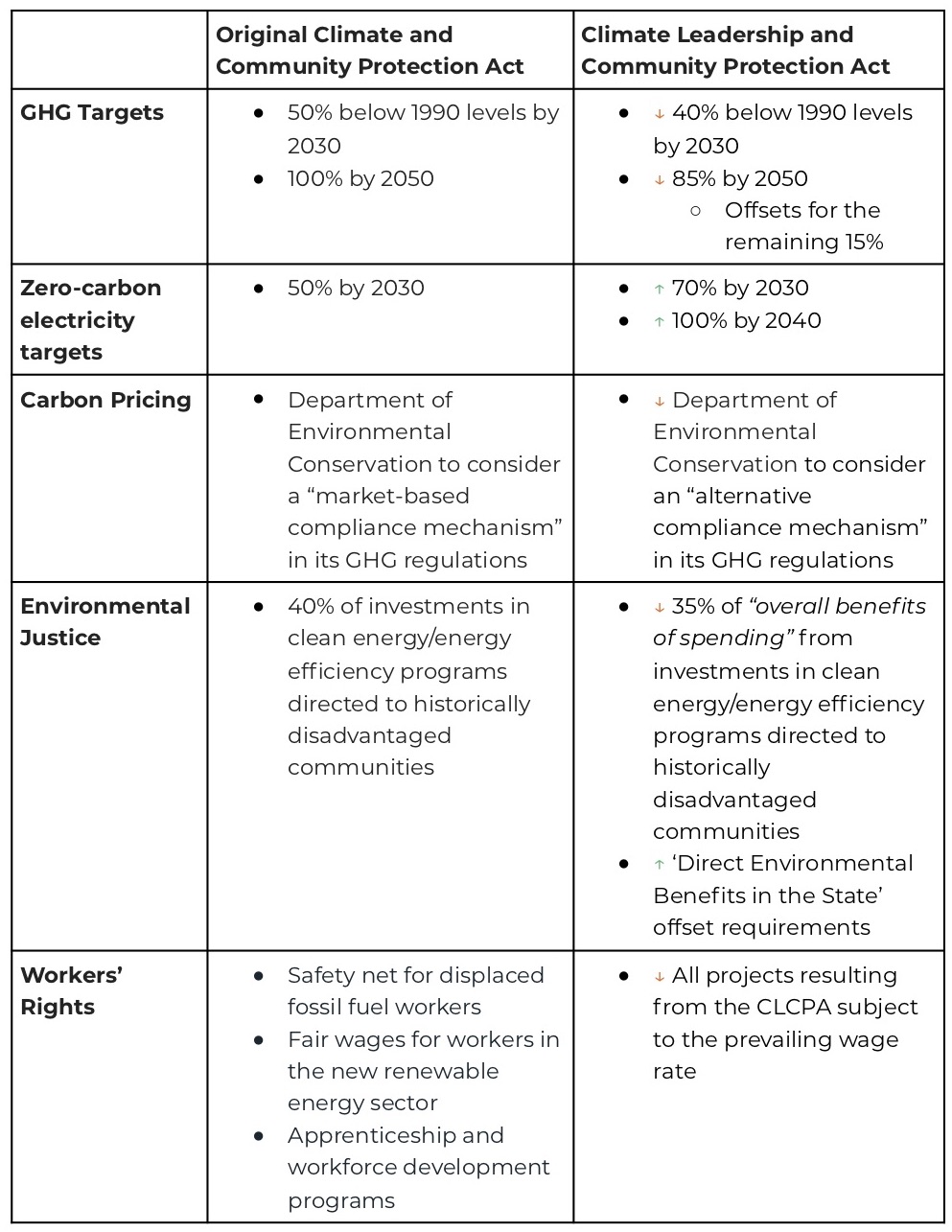New York state’s Climate and Community Protection Act (CCPA), heralded as “the most robust climate policy package” in the country by Senator Chuck Schumer, overcame its final hurdle of gaining support from Gov. Andrew Cuomo. Last week, Gov. Cuomo, who had originally introduced his own plan that called for decarbonizing the electric sector and forming a council to study the issue of economy-wide decarbonization, struck a compromise with the legislature on the bill.
With the promise that the Governor would sign the bill into law, the CCPA passed the Senate earlier last week, under the new name Climate Leadership and Community Protection Act (CLCPA). Then, in the final hours of New York’s legislative session, early in the morning on June 20th, the bill successfully passed the Assembly as well.
The passage of this ambitious climate bill is significant. However, some critical changes were made to the bill this past week in order to reach a compromise, which are worth taking a closer look at. Moreover, passing the bill is only the beginning of the work, and the implementation and rule-making process will be critical to its eventual success.
From CCPA to CLCPA: Key Elements of Bill Design
The original CCPA bill text called for 50% of the state’s electricity to come from clean energy sources by 2030, 40% of clean energy funds to be reinvested in vulnerable communities, and 100% of human-produced carbon pollution to be eliminated by 2050.
The compromise that was agreed upon is somewhat of a mixed-bag on climate ambitions and a general weakening of social justice provisions. While the revised version has weaker greenhouse gas (GHG) targets, fewer direct environmental justice safeguards, and softer language related to carbon pricing, it also features stronger zero-carbon electricity requirements.
A comparison of the final CLCPA and the original CCPA is depicted below:

The bill specifies that offsets are only allowed where it is technologically infeasible to reduce emissions directly. Offsets must be permanent, verifiable, additional (above and beyond what would have been reduced anyway), within 25 miles of the source they are offsetting whenever possible, and may not disproportionately harm disadvantaged communities.
Overall, environmental justice organizations have described the final version as a strong climate bill, but no longer a climate justice bill. NY Renews, a coalition of more than 180 environmental, justice, faith, labor, and community groups that was instrumental in passing this legislation, had this to say: “Ultimately, the Climate Leadership and Community Protection Act is a partial victory for New Yorkers. The fight for true climate justice demands transformative change, and we will bring that fight until our communities win.”
Priya Mulgaonkar of NY Renews added, “you can’t address climate change without addressing environmental justice, racial justice, and economic justice […but] we’re feeling really good about the guardrails we got in.”
That said, there is still room within the text of the final bill to achieve ambitious climate justice results in addition to carbon reduction, but with less explicit mandates in this area, this is where the rule-making and implementation process comes in.
Where do we go from here?
Gov. Cuomo is expected to sign the bill into law promptly. After that, the crucial work of implementation begins. Leading the charge in implementation is the New York State Climate Action Council, a 22-member body created to develop a scoping plan and suite of policy and program recommendations to reach the targets set out in the legislation. The Council is led by the DEC and NYSERDA, and is to be advised by the Climate Justice Working Group and Environmental Justice Advisory Group, who will identify disadvantaged communities for the purpose of investments and pollution-reduction programs.
All eyes will be on New York in the coming months, as some experts believe that the CLCPA legislation will serve as a blueprint for the federal Green New Deal.









